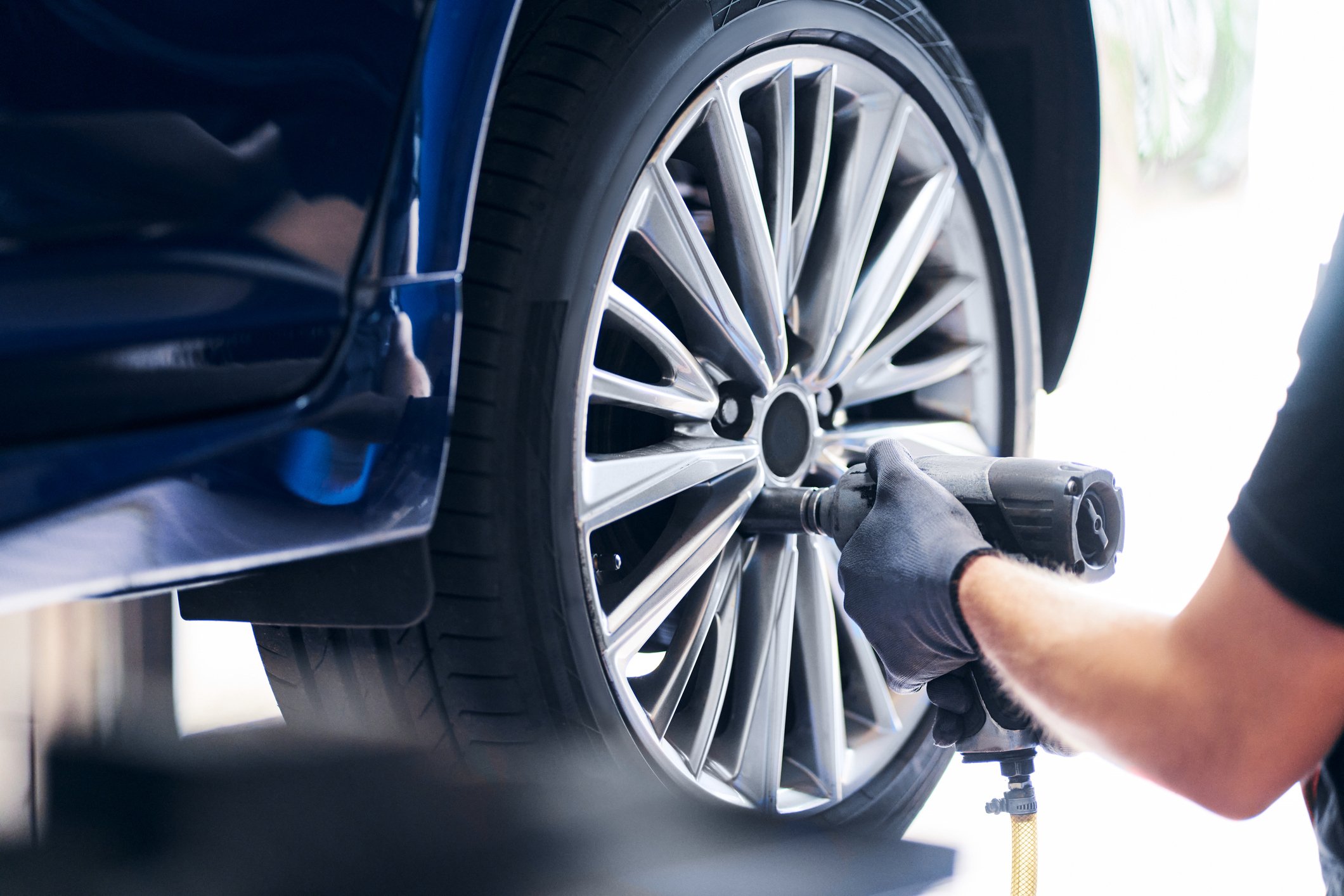All-Season Tire Buyer’s Guide: Best Picks for Every Budget
All-season tires blend the characteristics of more specialized summer (performance) tires and winter (snow and ice) tires, making them a practical choice for drivers who prefer not to switch tires seasonally. They’re also quiet, long wearing and available to fit virtually any car or truck. In fact, all-season tires are fitted to most new cars and trucks right from the factory.
But are all-season tires the best type of tire for your car or truck? Here’s everything you need to know.

When All-Season Tires Are Best
If you live in a moderate climate and don’t care about ultimate performance in certain types of weather conditions, then all-season tires are ideal. They feature tread patterns and materials that perform adequately in a variety of road conditions, including dry, wet and light snow, and usually cost less than more specialized winter or summer tires. To ensure that they’re easy to identify, most tire manufacturers clearly label their tires as "All-Season" or "A/S" on the sidewall. (Learn how to read your tire’s sidewall here.)
However, all-season tires are not necessarily the do-all solution that their name suggests. Not for everyone. They don’t offer the same level of ice and snow traction as winter tires, nor do they provide the optimal grip and performance of summer tires in warm dry and wet conditions. That’s why many (most?) drivers who purchase summer tires change their tires as the season changes, opting for all-season or all-weather tires for colder weather.
Despite what their name implies, all-season tires are optimized for temperatures above 40 degrees Fahrenheit. As the temperature drops below that milestone the rubber compound of an all-season tire becomes significantly harder than a winter tire compound, which in combination with other factors, gives it less traction on snow or ice. If you live where snow and ice stay on the road awhile, a good set of winter or all-weather tires (see below) for the colder months is a smart investment.
On the other hand, drivers in warm climates can take advantage of the additional traction offered by a set of summer tires, which are more optimized for dry conditions and usually offer superior traction in wet weather at temperatures above 40 degrees Fahrenheit. If you head for the ski slopes, however, you’ll have to change your tires first, as summer tires are even less tolerant of cold temperatures than all-season tires.
Most high-performance new cars including the Honda Civic Type R and supercars from McLaren, Ferrari and Lamborghini all come equipped with grippier summer tires from the factory.

All-Season Tires vs. All-Weather Tires
All-weather tires, also known as premium traction tires, are all-season tires that meet a specific packed-snow traction standard determined by the American Society of Testing and Materials. This means they’re held to a higher standard of performance in cold, snowy conditions than all-season tires.
All-weather tires are identified by the same small three-peak mountain snowflake (3PMSF) icon on their sidewall as winter tires. They typically feature a less aggressive tread design than dedicated winter tires with a tread depth similar to all-season tires. Unlike dedicated winter tires, all-weather tires can be used year round, however, they will wear faster and make more noise than all-season tires that don’t meet the 3PMSF standard.
What about mud and snow (M+S) tires?
On the sidewall of some all-season tires you’ll see an M+S or "M/S" designation which stands for “mud and snow.” These tires have a more aggressive tread pattern and have been determined by their manufacturers to be more capable in slightly muddy or snowy conditions.
However, don’t confuse these with dedicated off-road, all-terrain or winter tires. Unlike the 3PMSF icon, the M+S label does not indicate that the tire meets a formal traction standard in certain conditions.
Shop Smart
Buying the right tires can be a crucial decision, impacting your vehicle's performance and safety across various weather conditions. Before choosing a set of all-season tires for your ride it’s important to assess your driving habits, typical weather conditions in your area and the type of vehicle you drive. This will help determine the specific features you require in your tires.
By considering these factors and doing thorough research, you can confidently select the best all-season tires for your vehicle, ensuring optimal performance and safety throughout the year.
Still have questions? Speak to one of our Tinker Experts today!




